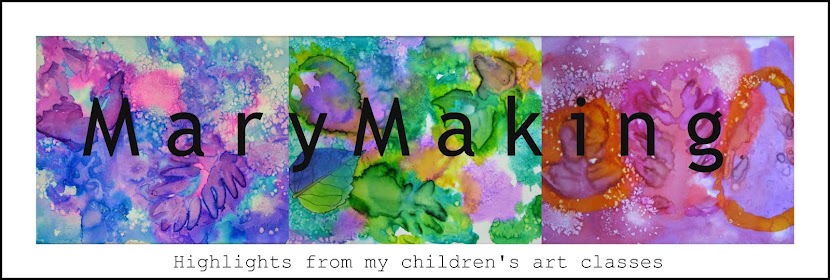










These multi-media pieces were created first with a dry brushed acrylic background on black paper - no water allowed. We put these up to dry and created our symmetrical Luna Moths by drawing on one side of a folded paper with pencil, closing it up, and rubbing the back with the end of marker to create a mirror image. We learned that moths are active at night(hence the name Luna for moon) unlike butterflies who are active in the daytime. And unlike butterflies, Luna Moths have no mouths, so cannot eat. For this reason, they only live about 1 week. We looked at pictures of them and noticed their beautiful shade of light green and how they have spots on them that look like eyes. With their observations, the children added more details to their drawings. Lines were gone over in Sharpie and color was then added using chalk pastels. Before cut moths could be glued to their moonlit landscape, trees were added with oil pastel and moon and stars using acrylics. I was very pleased to see my group of K thru 4th putting their own unique spin on this project. Well done guys! I've had a fun few weeks exploring a variety of media and techniques with you!
(Since these nocturnal beauties are more prevalent on the east coast and Canada, I have never had the opportunity to see one, but they are truly stunning in photos. Their distinct and unique beauty is what inspired this project - as well as last years' moonlit fireflies.)









































